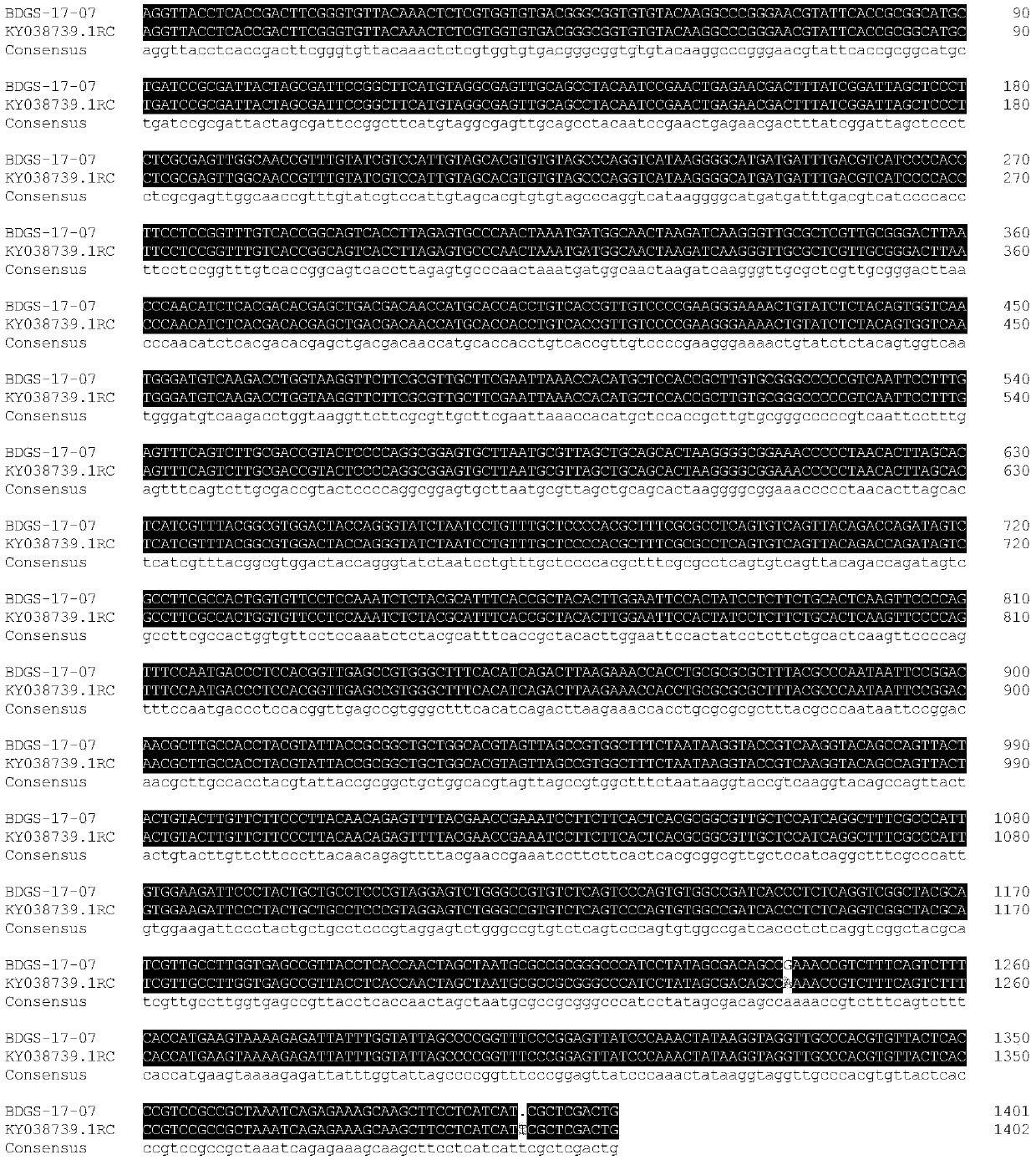Lysinibacillus sp. for controlling plant nematodes and application thereof
A lysine bacillus, plant technology, applied in the application, nematicide, plant growth regulator and other directions, can solve the problems of few chemical nematicides, serious pollution, high toxicity and so on
- Summary
- Abstract
- Description
- Claims
- Application Information
AI Technical Summary
Problems solved by technology
Method used
Image
Examples
Embodiment 1
[0043] Example 1. Isolation, purification and identification of BDGS-17-07 strain
[0044] 1. Isolation and purification of BDGS-17-07 strain
[0045] Strain BDGS-17-07 was isolated from the soil of Badagong Mountain in Zhangjiajie, Hunan Province. The specific steps are as follows: Weigh 5g of soil sample, add it to a conical flask containing 45 mL of sterile water, shake the conical flask in a shaker with a rotational speed of 200rpm / min for 30min, and prepare 10 -1 soil diluent. Dilute step by step in the ultra-clean workbench to prepare a series of corresponding gradient soil dilutions. Pipette an appropriate amount of soil dilution on the LB plate, and then spread it evenly with a spreader, repeating 3 times for each concentration. Placed in a constant temperature incubator at 28 °C for 24 hours, observed the growth of colonies on the plate, picked a single colony on the plate, named it BDGS-17-07 strain, and purified it by three-zone streak on a solid LB plate to obta...
Embodiment 2
[0054] Embodiment 2, the preparation of BDGS-17-07 bacterial agent
[0055] 1. Culture of plate strains
[0056] The BDGS-17-07 strain isolated in Example 1 was inoculated on a LB solid medium plate, cultured at 28° C. for 24 hours, and a single colony was picked to obtain a plate strain.
[0057] 2. Liquid fermentation culture
[0058] The plate strain obtained in step 1 was inoculated into a 250 mL conical flask containing 100 mL of fermentation medium, and fermented and cultured at 200 r / min shaker rotation speed for 60 h at 28 °C to obtain BDGS-17-07 and its metabolites. The fermentation broth was named BDGS-17-07 bacterial agent.
Embodiment 3
[0059] Example 3. Application of BDGS-17-07 inoculum in the control of plant parasitic nematodes
[0060] 1. The nematicidal activity test of BDGS-17-07 inoculum on the second instar larvae of plant parasitic nematodes
[0061] 1. Obtaining the second instar larvae of Meloidogyne incognita
[0062] Take the water spinach roots inoculated with the second instar larvae of Nematode incognita for 60-90 days, wash the root soil with tap water, pick the mature and full egg masses with tweezers under a magnifying glass and place them in the hatching sieve. Place it in a petri dish, add distilled water to the petri dish until the egg mass is slightly covered, and incubate in a 25°C constant temperature incubator. The activity of the second-instar larvae after hatching was collected every 24 hours, and the second-instar larvae after 2-5 days were collected and temporarily stored in a 4°C refrigerator.
[0063] 2. Preparation of second instar larvae suspension of M. incognita and egg ...
PUM
 Login to View More
Login to View More Abstract
Description
Claims
Application Information
 Login to View More
Login to View More - R&D
- Intellectual Property
- Life Sciences
- Materials
- Tech Scout
- Unparalleled Data Quality
- Higher Quality Content
- 60% Fewer Hallucinations
Browse by: Latest US Patents, China's latest patents, Technical Efficacy Thesaurus, Application Domain, Technology Topic, Popular Technical Reports.
© 2025 PatSnap. All rights reserved.Legal|Privacy policy|Modern Slavery Act Transparency Statement|Sitemap|About US| Contact US: help@patsnap.com



